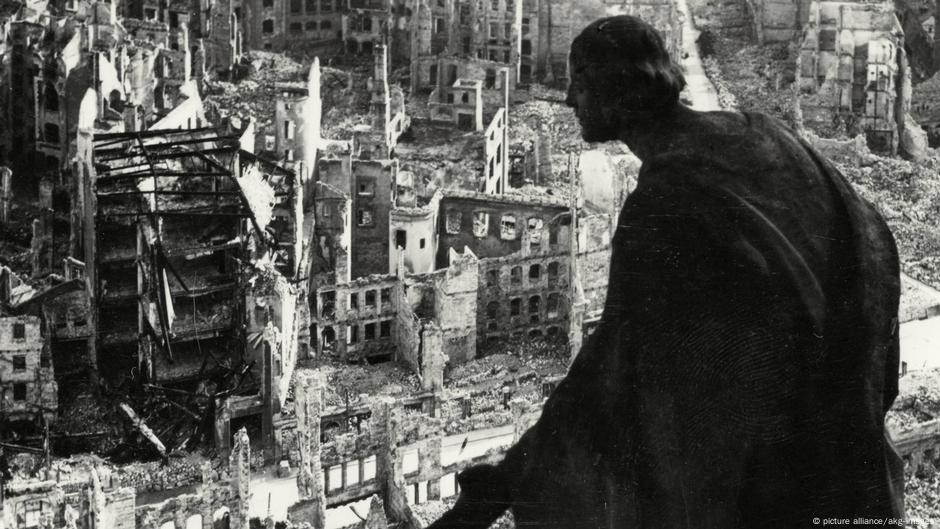In the late evening of February 13, 1945, the British and US Bomber Squadron started havoc on Dresseden. By noon on 15 February, a large -scale fire spread, causing thousands of people to kill and almost completely reduced the old city to the debris.
After the wind raid, the remaining people piled the dead to burn them to prevent the epidemic. The picture taken by photographer Walter Han is placed in human memories.
Even after 80 years of Dresseden’s bombing in World War II, there is a debate about the number of victims. There is often an attempt to connect an air raid for special political purposes.
Claim: “If you have never heard of dressed’s firebombing, you have missed an important part of history. It was 2 in the world when the friendly nations bomb a civic city. Hundreds of innocent people lost their lives Given Post on X From January 17, 2025. Another X-user Talks about 100,000 to 130,000 victims. The 250,000 figure is moving between right -wing extremists, as This banner Lower Saxony, by a group of activists in Einbeck, shows in 2020.
DW fact check: Untrue.
As Research Compiled by a commission of historians over the years and published in 2010, this number was less than hundreds of thousands. Researchers spoke of “up to 25,000 people”, who were killed in an air raid from 13 February to 15 February.
Estimates of number of victims in GDR
After the surrender of Germany on 8 May 1945, Dresseden became part of the Soviet -occupied region, which became the Communist German Democratic Republic (GDR) in 1949. “In GDR, former colleagues and now Western powers were stylized as ‘Warmongars’. Dressden was a symbol of this,” Dresseden sociologist Claudia Jerjak says.
Based on analysis by SED Functionary Max Ceduvitz, in 1955 “published in his book” in “Dresseden’s destruction and reconstruction“(Destruction and reconstruction of Dresden), GDR regime estimated the number of deaths at 35,000 and did not question it until the end of 1989/90.
After the peaceful revolution of 1989/90, due to the renovation of the two German states, nationalism was caught, called sociologist Jerjak. The right -wing extremists then propagated the National Socialist (Nazi), who created the myth “the myth of the dresseden as an insensitively destroyed, the image of the innocent city of art and culture”.
In 2004, Dresden’s Lord Mayor and Saxon State Parliament appointed Historical commission To counter the recurring speculation about the number of victims.
Dresseden Historical Commission Results
After more than five years of work, researchers presented their final report in 2010. According to this, reports from Dresseden Police Headquarters show that the authorities had estimated the total number of deaths at 25,000 at that time. The Historical Commission compared the registers with several other sources and investigations and found them commendable and sensible.
Based on the careful records placed by the national socialist authorities, historians were able to refute the broader theory that hundreds of tens or even thousands of refugees from the German eastern regions stayed in dresseden and remained disorganized. In an interview with DW, the commission member Michael Nutzner says, “Every refugee train that stopped at a dresseden train station had to leave the city after 24 hours because the space was extremely tight during the war.” “This means that we can assume that that night the number of refugees in Dresden which was in the area of several thousand people.”
“For 50 years, we have accepted a figure of 35,000 dead, but now we have been asked to prove with scientific methods that it was 25,000,” Dresseden -born Thomas Cubir, City Archive head and therefore a commission’s head Members, say, say. An interview with DW.
This discovery has shaken many emotions. An example of this is A post on XIn which AFD Sarland claims that the numbers are “still small.”
Where did a false claim of several hundred thousand come from?
Shortly after the attacks, different figures were already roaming around. Swedish newspaper Swinska dagbladetFor example, on February 25, 1945, there was already an estimate: “No one knows how people died (…), but a few days after the devastation, the number is close to 100,000 to 200,000. “
The Nazi-Inaccurate Federal Foreign Office picked up this article in a telegram, in which it directed the diplomatic mission in the burn to quoted it properly in his communication about dresseden. A copy of the document can be found in the federal archives.
The Historical Commission has classified this order as part of the intensive and successful campaign of “Foreign Publicity (…) against the conduct of the war”. Swinska dagbladet No one gives evidence for your estimate. Some of the remaining reporters from neutral Sweden in Berlin adopted the inflated figures presented to him at the press conference by Nazo officials.
Later the casualties have a lack of reliable sources
Like other social media users, the Russian Foreign Ministry does not refer to sources when it refers to the figures of 135,000 dead Post on X In 2023.
Highly controversial writer and Notorious holocaust danier David Irving cited the same figure in early 1966 in one of the new versions of his book “The Fall of Dresseden” (first published in 1963).
Regarding the number of victims in Dresden, Irving allegedly referred to the “Daily Command 47” (Daily Order 47) released by high -ranked SS and police leader on 22 March 1945. However, in the book “Infrano DressDen“Published the same year, Dresseden’s long -time serving Mayor Walter Wadeer” proved “that” The Duminy ‘Daily Order no. “Historian Richard J. Evans, who testified as an expert witness in a court case against his fellow Country Ivings in 2000, concluded that Irving would know that this is the document – and others – were not valid.
In 2005, contemporary witness and writer Wolfgang Sharschmidt caused a sensation with his principle that 40,000 victims of bombing were secretly buried in a forest near Dresden. However, the historic commission was able to show that the quoted evidence was not decisive. A secret burial at this location, which is complicated for publicity and logical reasons.
The release revisions strives by rights
How do the new-Nazis and other right-wing extremists keep the revisionist myth of Dresden to date One sheet Third route from 2021 from the younger new-Nazi party: “Dresseden’s killers are today’s warmanders! (…) We demand: (…) to end for the joke and refusal of German victims.”
However, there is no doubt that Dresden bombed: “Finding all thesis has no other ability to 1945, ie DressDen was a victim of this bombing,” the City archives clarifies Kubbler.
Accordingly, the city of Dresden will once again celebrate victims of destruction and bombing with a human chain on 13 February this year.
Edited by: Inner Isel





Leave a Reply